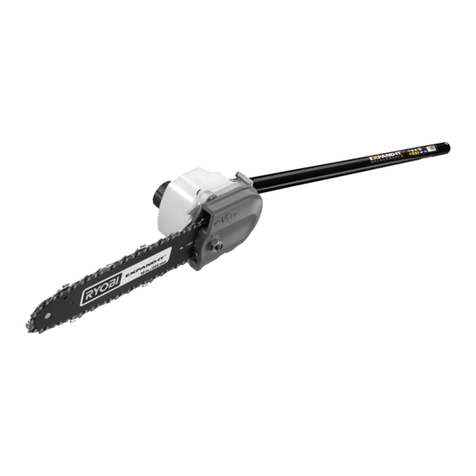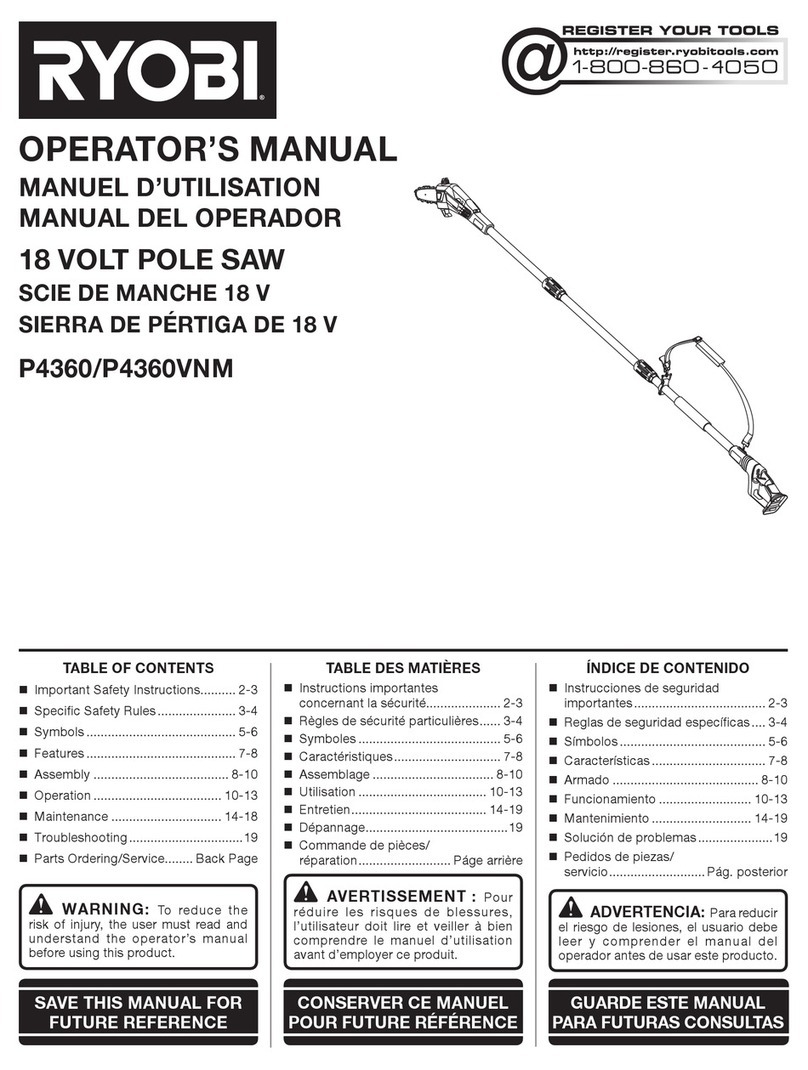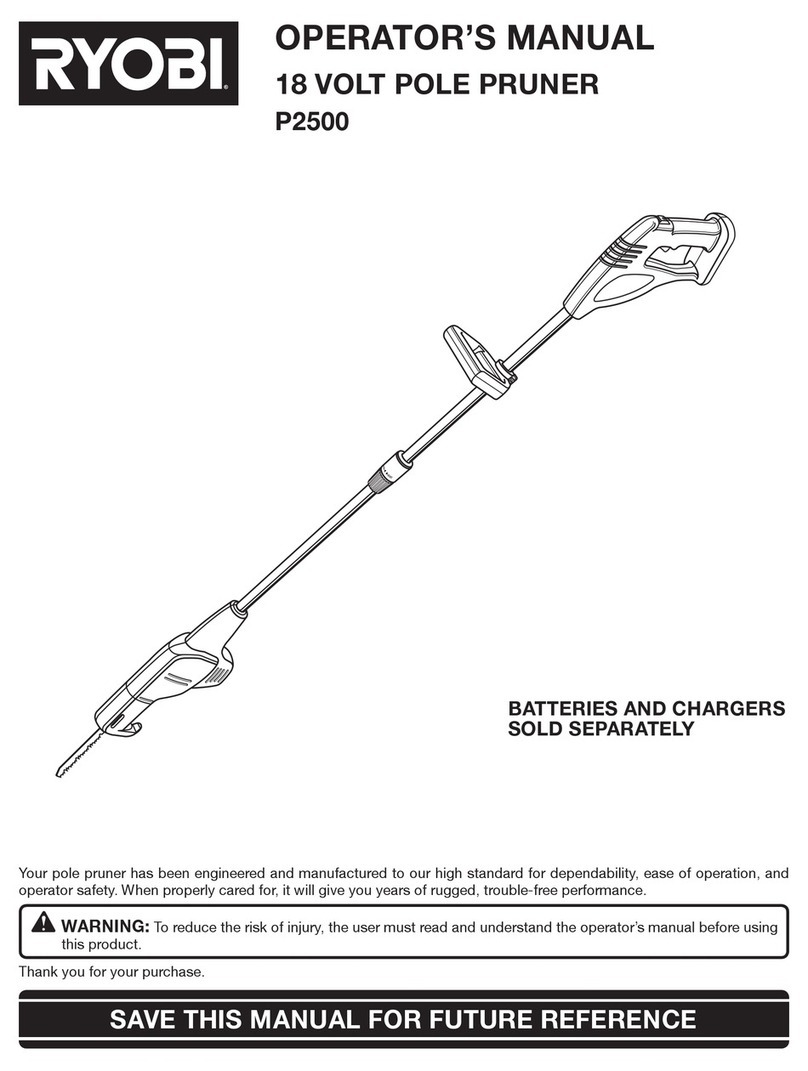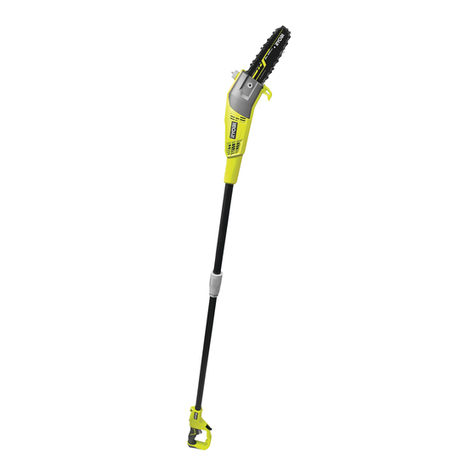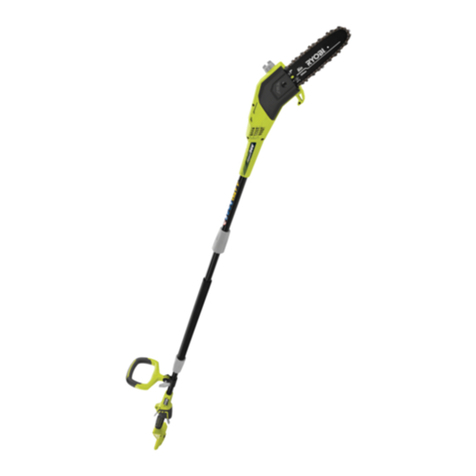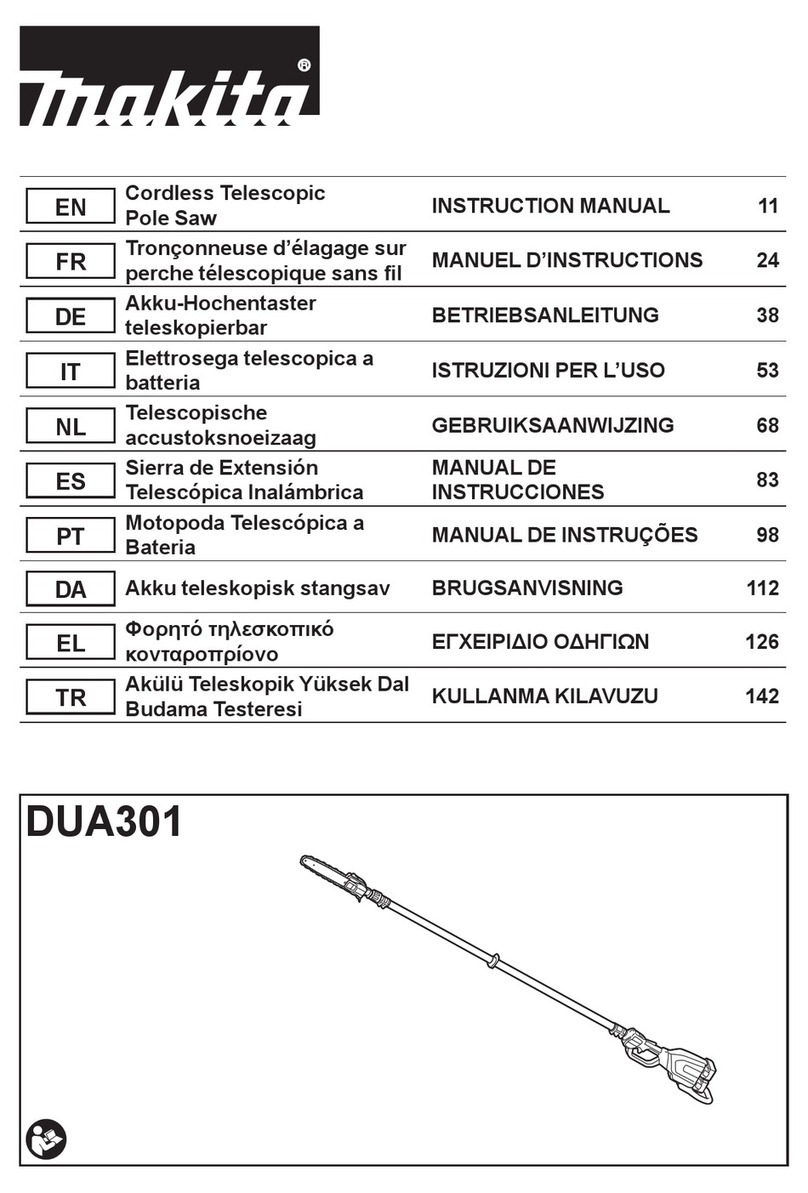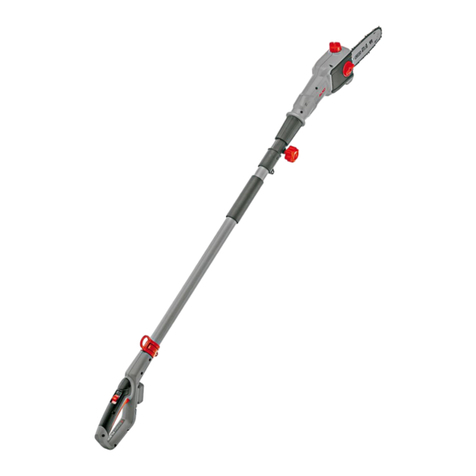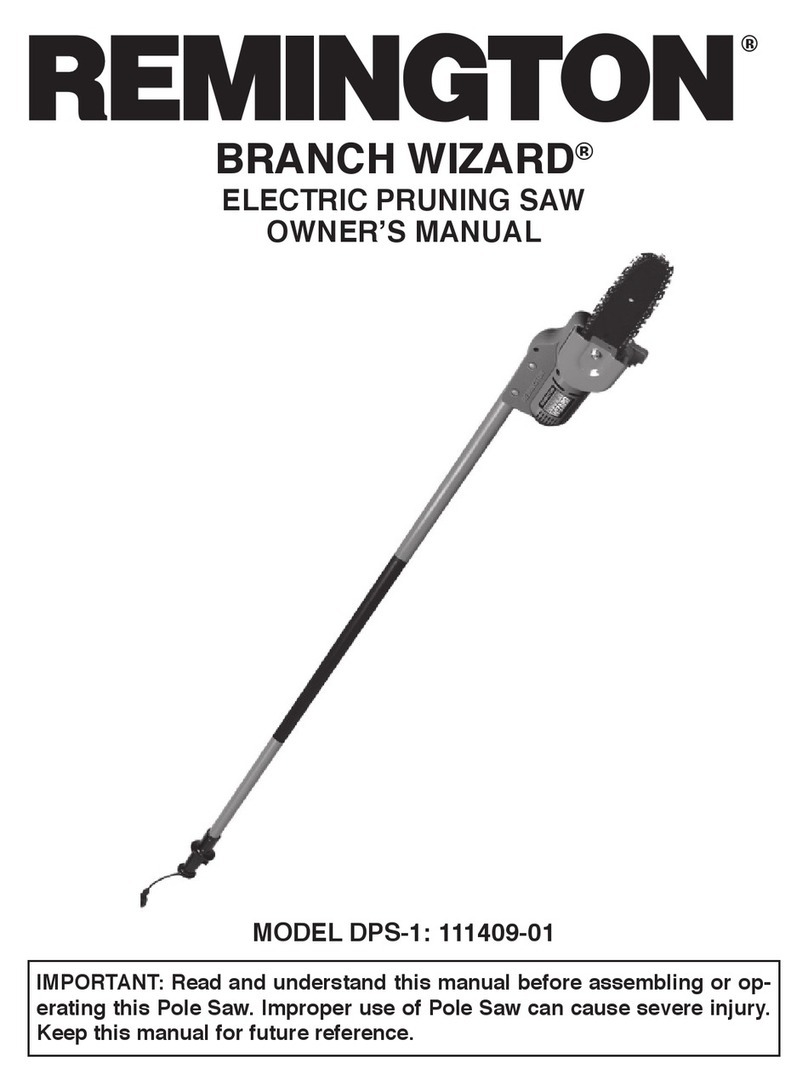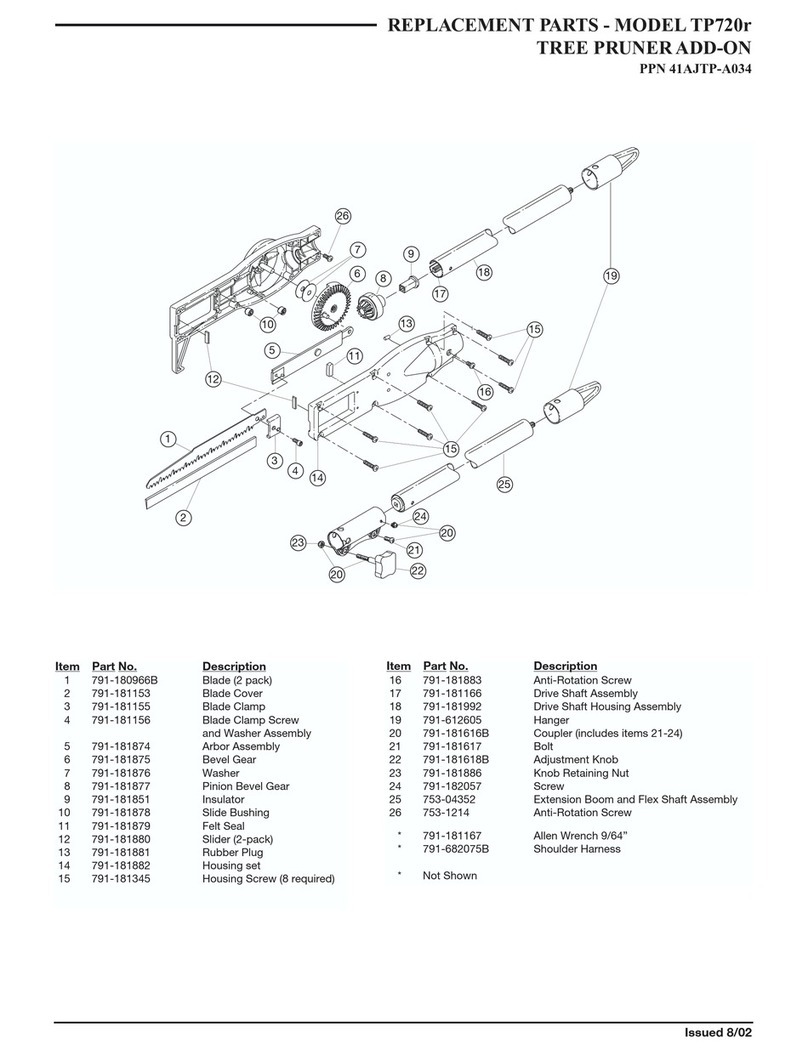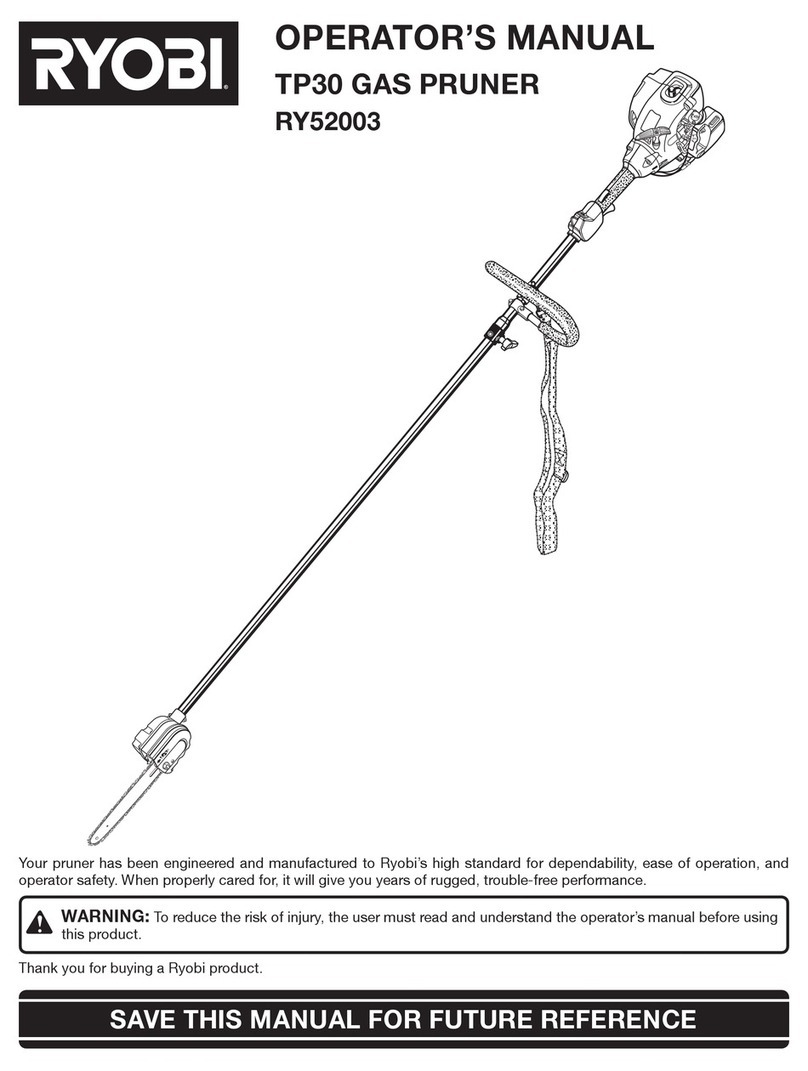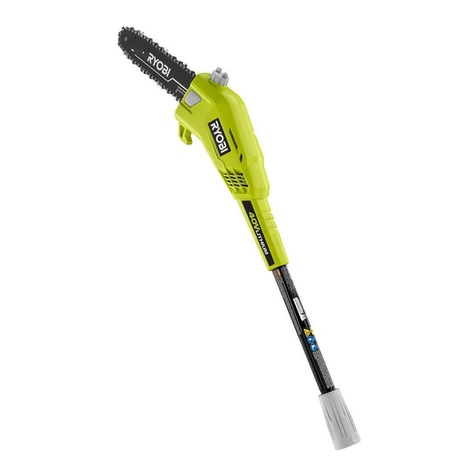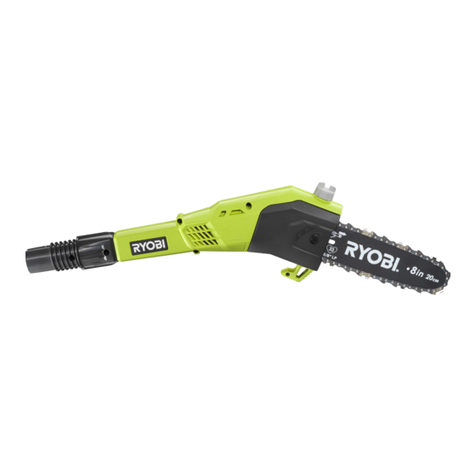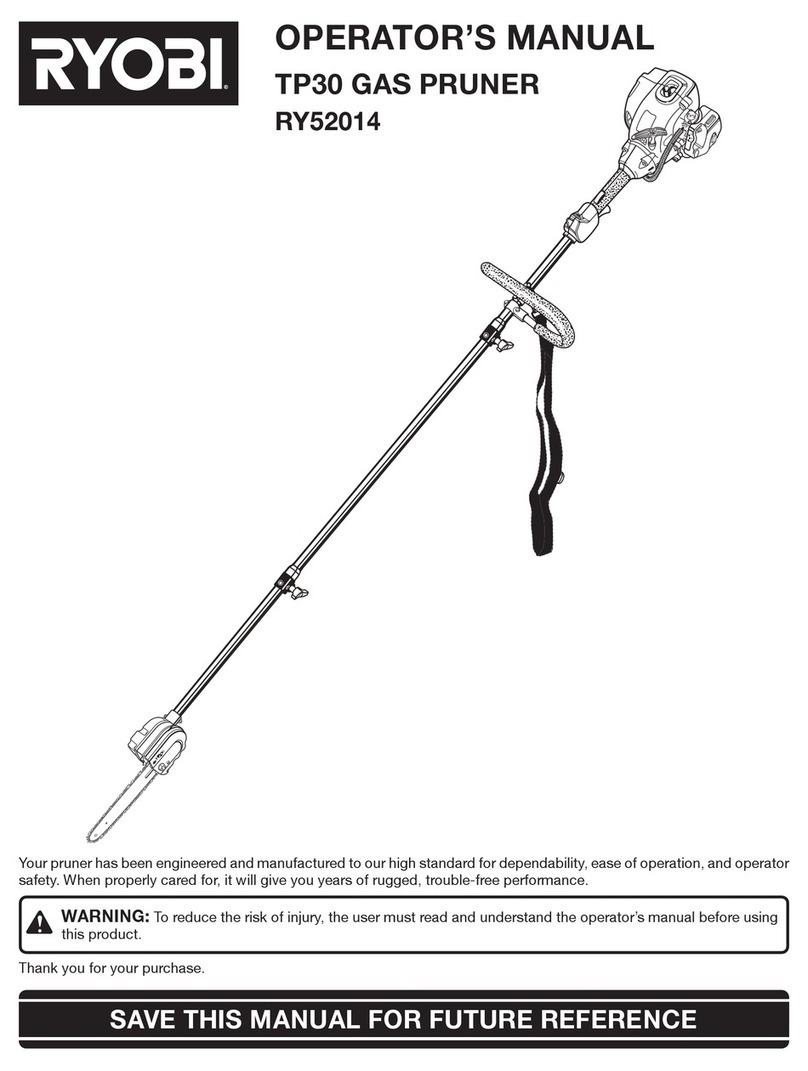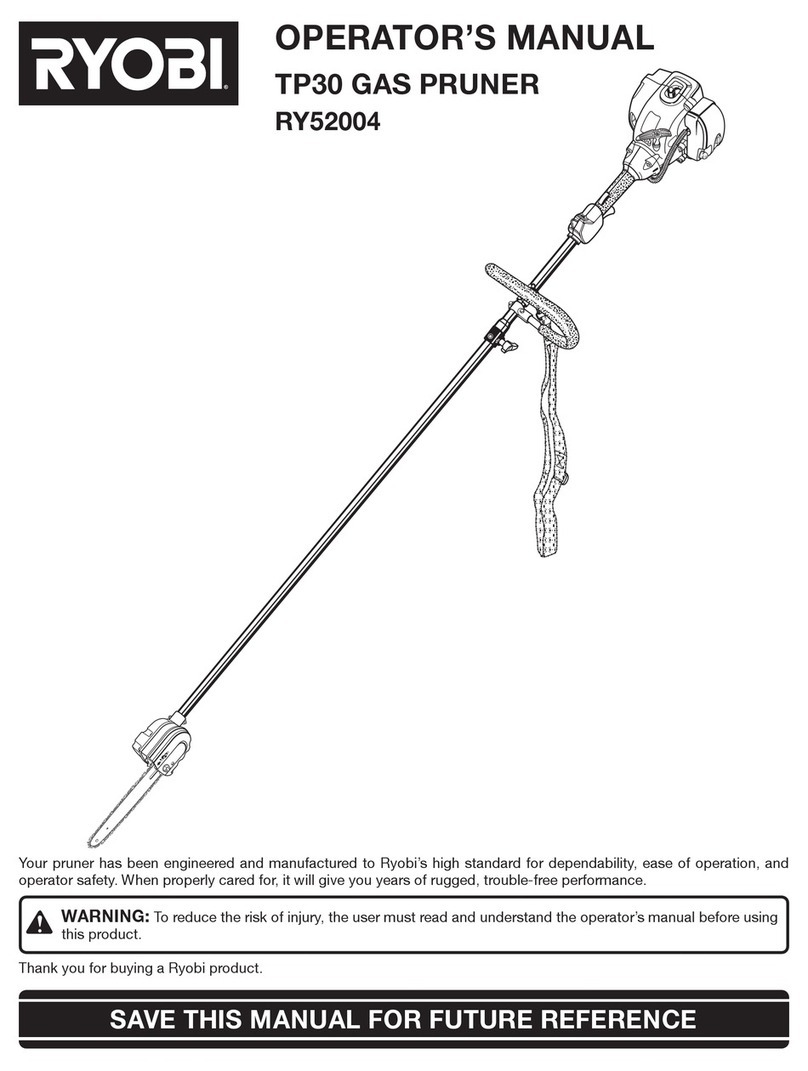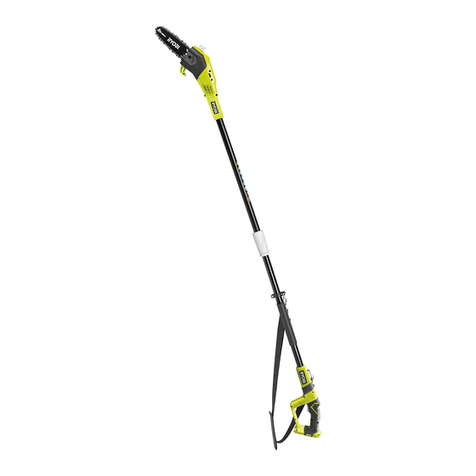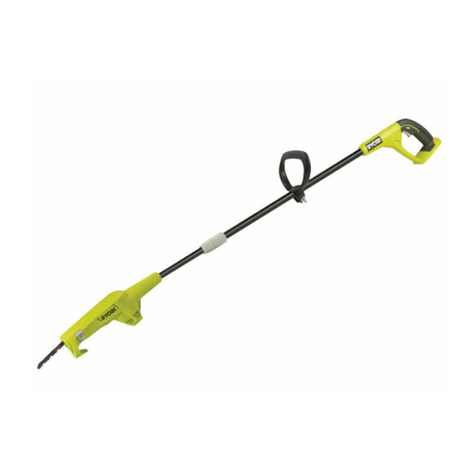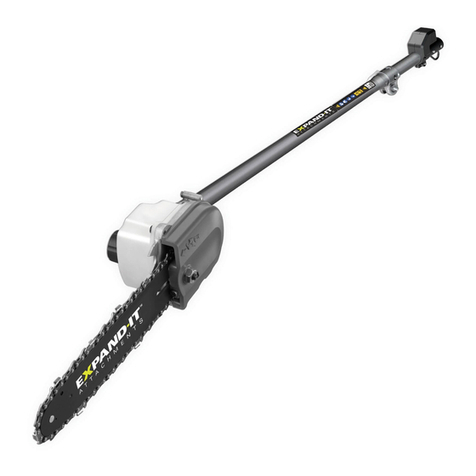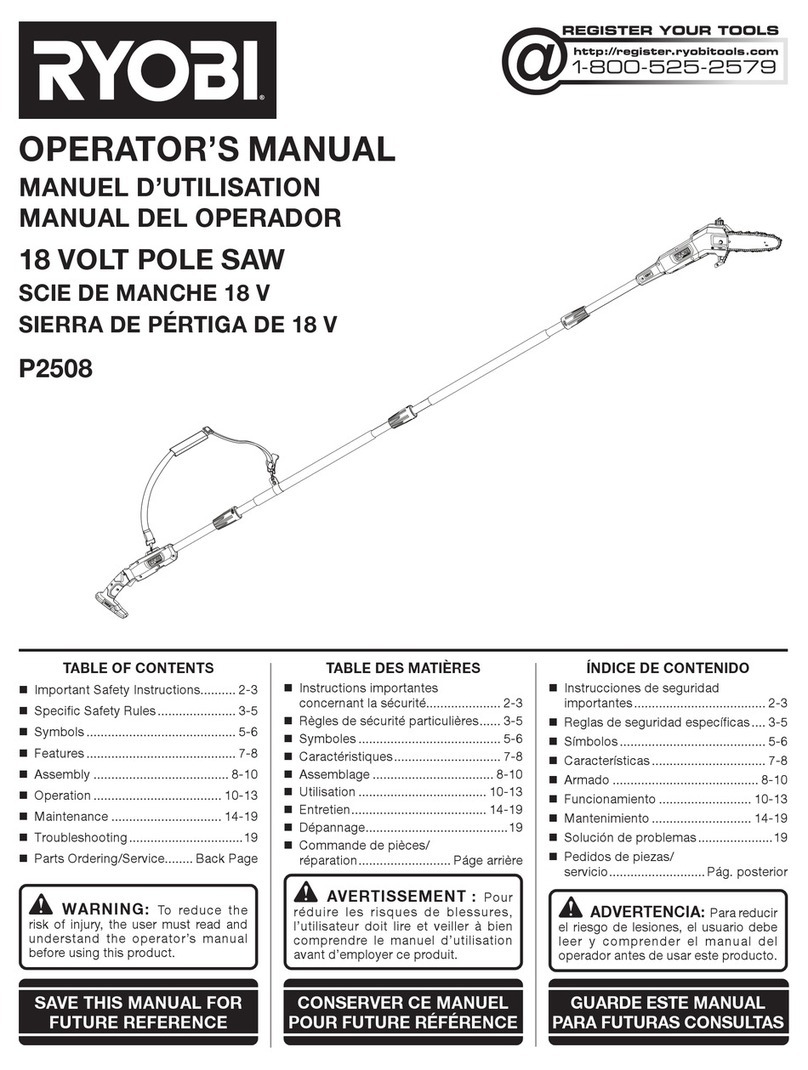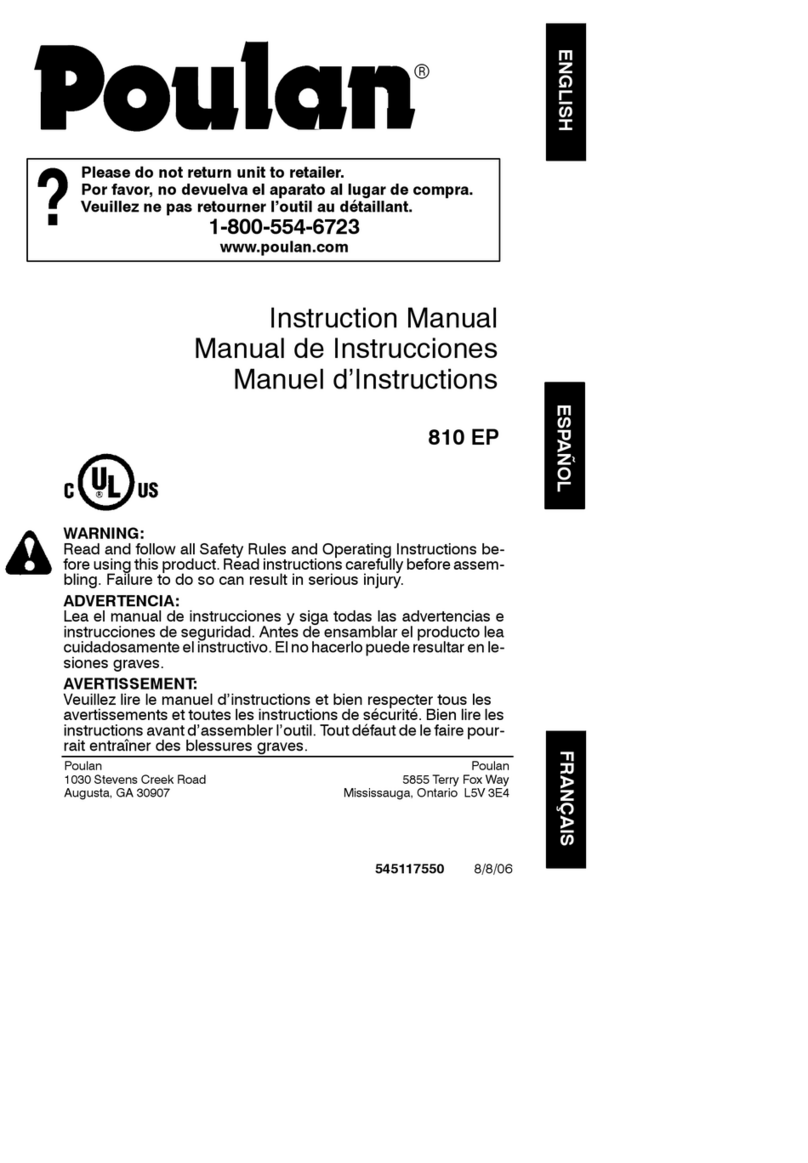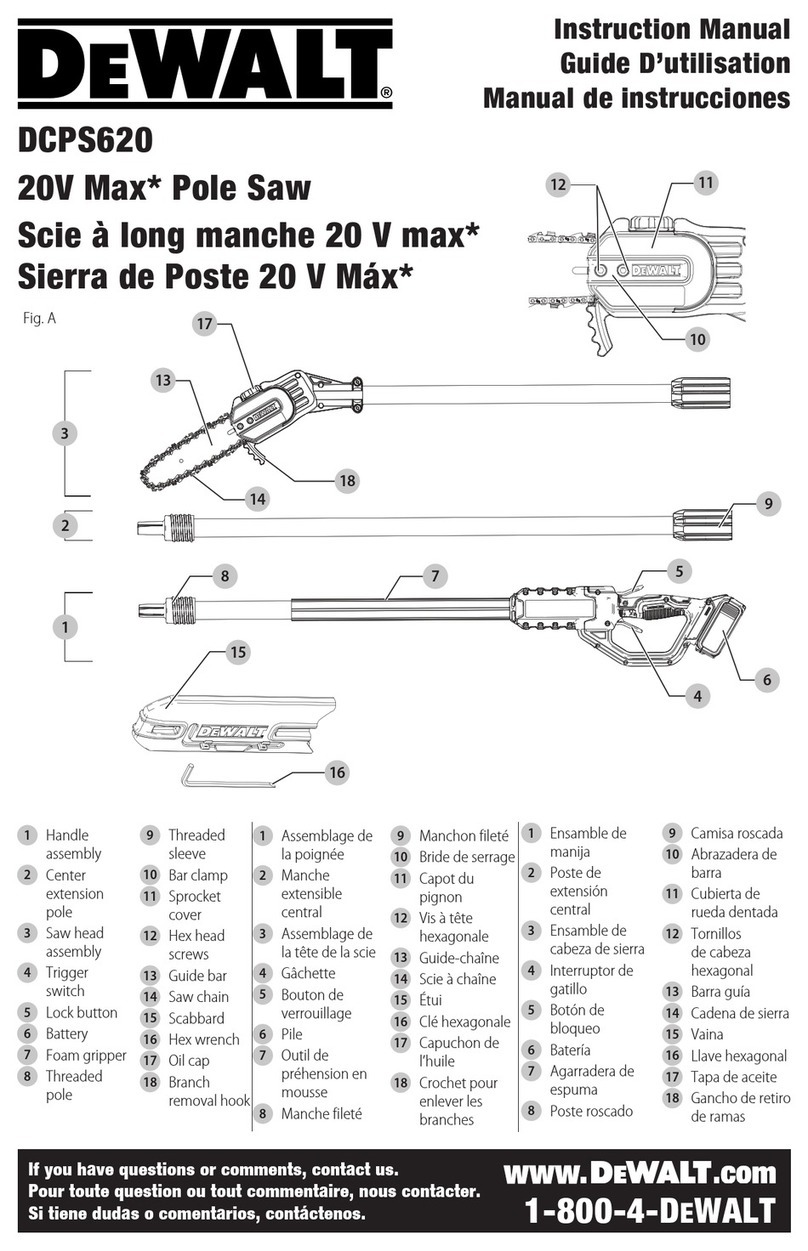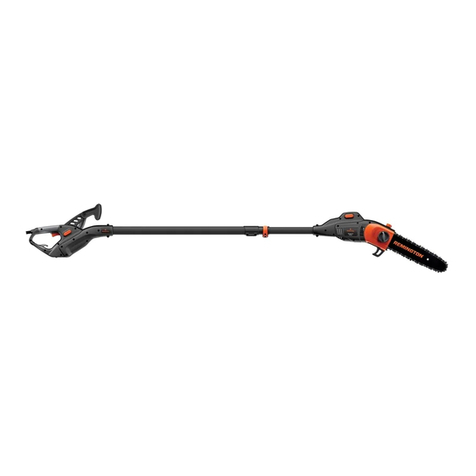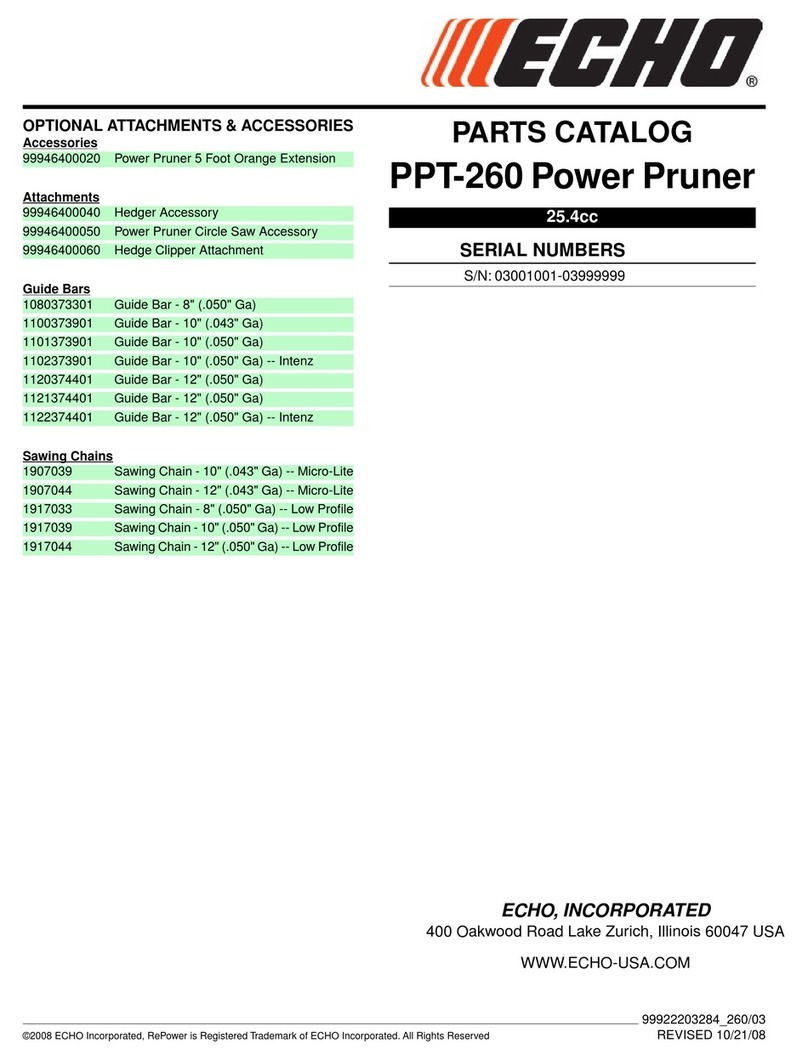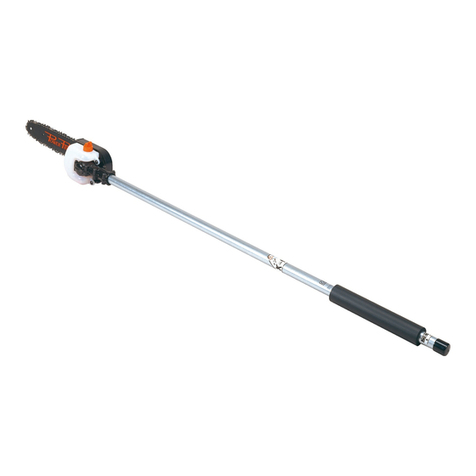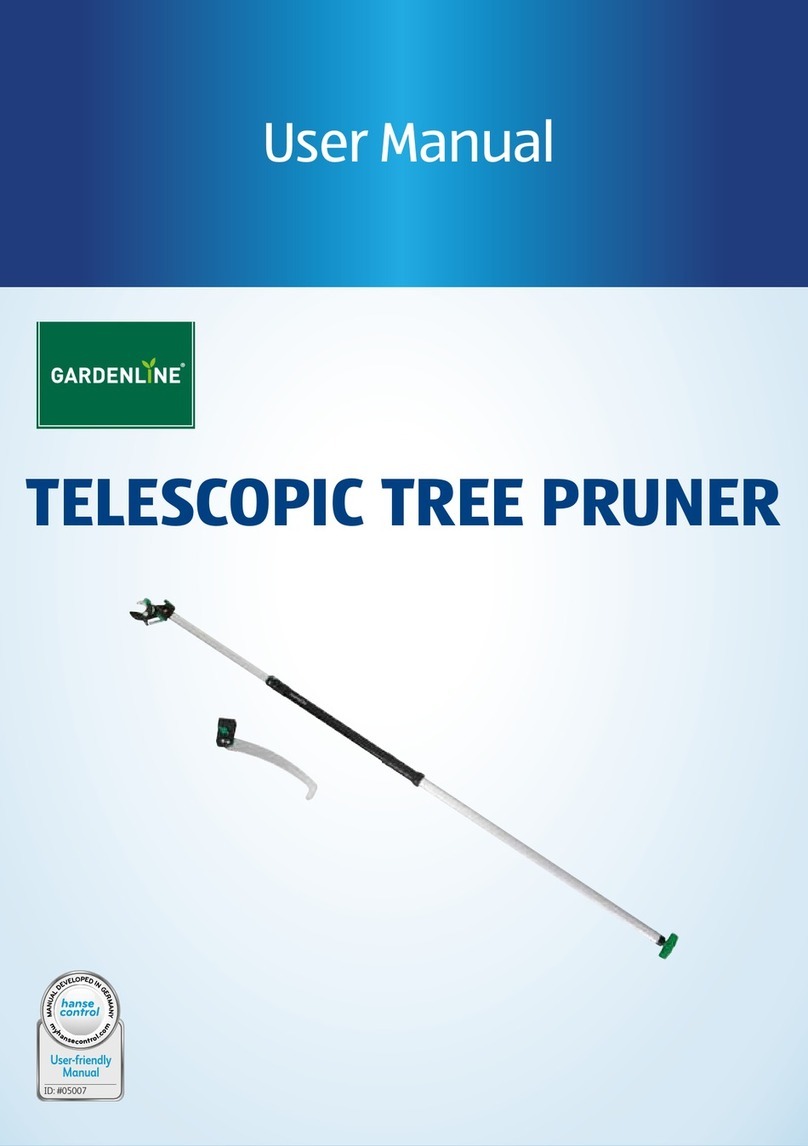WARNING
READ AND UNDERSTAND ALL INSTRUCTIONS.
Failure to follow all instructions listed below,
may result in electric shock, fire and/or serious
personal injury.
SAVE THESE INSTRUCTIONS.
GENERAL SAFETY RULES
■For safe operation, read and understand all instructions
before using the straight shaft trimmer attachment. Follow
all safety instructions. Failure to follow all safety
instructions listed below, can result in serious personal
injury.
■Do not allow children or untrained individuals to use this
unit.
■Wear safety glasses or goggles that are marked to comply
with ANSI Z87.1 standards and hearing protection when
operating this unit.
■Wear heavy long pants, boots, and gloves. Do not wear
loose fitting clothing, short pants, jewelry of any kind, or
go barefoot.
■Secure long hair so it is above shoulder level to prevent
entanglement in any moving parts.
■Keep all bystanders, children, and pets at least
15 m away.
■Do not operate this unit when you are tired, ill,
or under the influence of alcohol, drugs, or medication.
■Do not operate in poor lighting.
■Keep firm footing and balance. Do not overreach.
Overreaching can result in loss of balance or exposure to
hot surfaces.
■Keep all parts of your body away from any moving part.
■Do not touch areas around the muffler or cylinder of the
power head, these parts get hot from operation. Failure to
do so could result in possible serious personal injury.
■Always stop the engine and remove the spark plug wire
before making any adjustments or repairs except for
carburetor adjustments.
■Inspect unit before each use for loose fasteners, damaged
or missing parts. Correct before using the straight shaft
trimmer attachment. Failure to do so can cause serious
injury.
■Check for damaged parts. Before further use of the
appliance, any part that is damaged should be carefully
checked to determine that it will operate properly and
perform its intended function. Check for alignment of
moving parts, binding of moving parts, breakage of parts,
mounting, and any other conditions that may affect its
operation. A guard or other part that is damaged should
be properly repaired or replaced by an authorized service
center.
■Use only original manufacturer’s replacement parts.
Failure to do so, may cause poor performance, possible
injury, and will void your warranty.
■Do not, under any circumstance, use any attachment or
accessory on this product which was not provided with the
product or identified as appropriate for use with this
product in the Operator’s Manual.
SPECIFIC SAFETY RULES FOR PRUNER USE
■Kickback is a dangerous reaction that can lead to serious
injury. Kickback may occur when the moving chain
contacts an object at the upper portion of the tip of the
guide bar or when the wood closes in and pinches the
saw chain in the cut. Contact at the upper portion of the tip
of the guide bar can cause the chain to dig into the object
and stop the chain for an instant. The result is a lightning
fast, reverse reaction which kicks the guide bar up and
back toward the operator. If the saw chain is pinched
along the top of the guide bar, the guide bar can be driven
rapidly back toward the operator. Either of these reactions
can cause loss of saw control which can result in serious
injury. Do not rely exclusively upon the safety devices built
into your saw. As a chain saw user,
you should take several steps to keep your cutting jobs
free from accident or injury.
■With a basic understanding of kickback, you can reduce or
eliminate the element of surprise. Sudden surprise
contributes to accidents.
■Make sure that the area in which you are cutting is free
from obstructions. Do not let the nose of the guide bar
contact a log, branch, fence, or any other obstruction
while you are operating the unit.
■Always cut with the engine running at full speed. Fully
squeeze the throttle trigger and maintain a steady cutting
speed.
■Follow the sharpening and maintenance instructions for
the saw chain.
■Use only the replacement guide bars and low kickback
chains specified for your unit.
■Do not force tool. Use the correct tool for your application.
The correct tool will do the job better and safer at the rate
for which it is designed.
■Do not use on a ladder or unstable support.
■Never let anyone use your machine who has not received
adequate instructions in the machine's proper use.
This applies to rentals as well as private owned units and
also to the power head it is attached to.
■To protect yourself from electrocution, do not operate
within 50 feet (15 m) of overhead electrical lines.
■To protect yourself from falling branches, do not stand
directly under the branch or limb being cut. This unit
should not be held at an angle over 60° from ground level.
■Keep the handles dry, clean, and free of oil or fuel mixture.
2
English
SAFETY RULES
